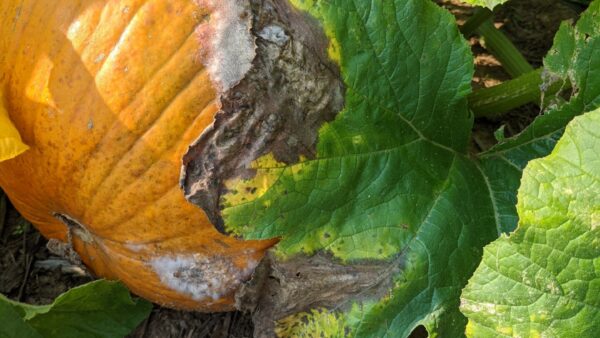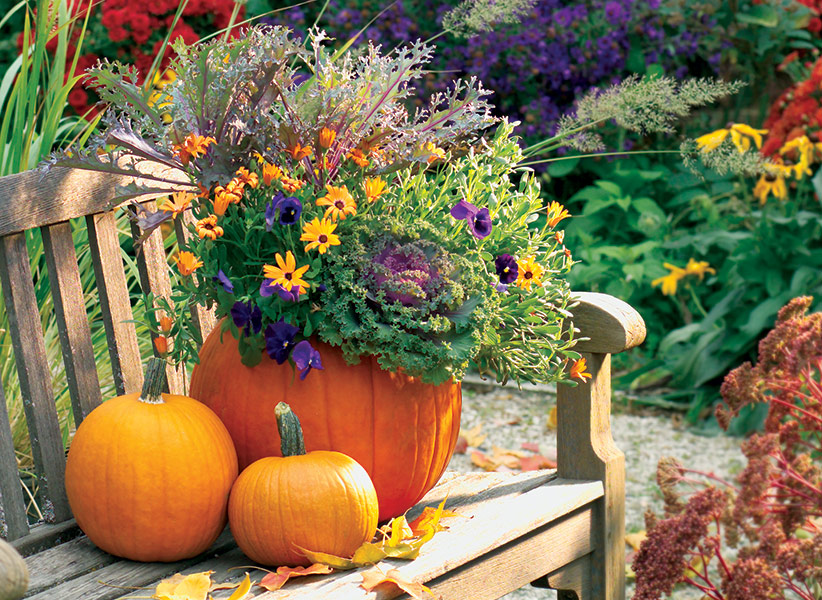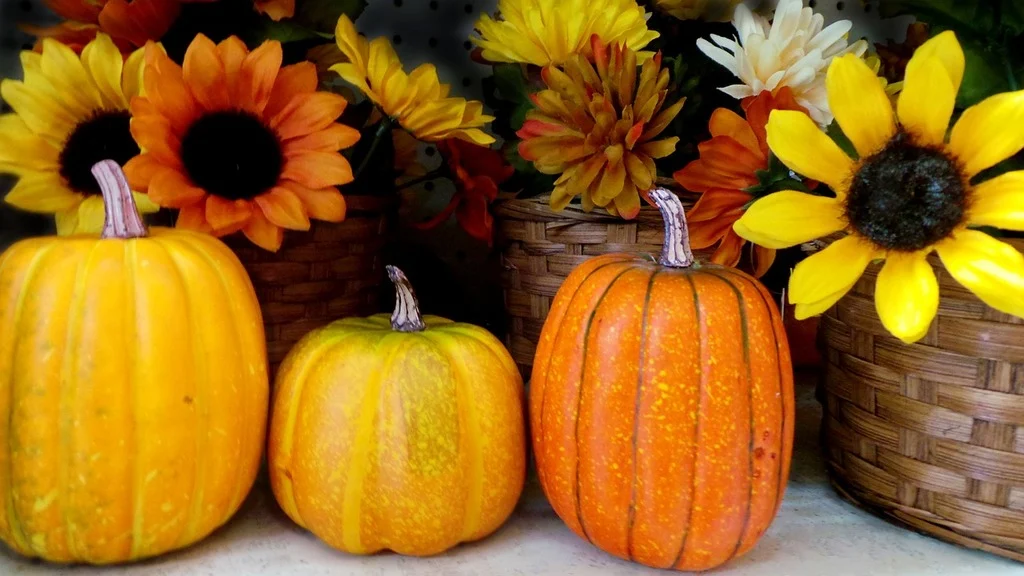Pumpkin Flowers: Unveiling Nature’s Autumn Elegance
Pumpkin flowers, often overshadowed by their famous fruit, hold a unique and enchanting beauty that deserves a spotlight in your garden. In this journey, we’ll explore the intricate world of pumpkin blossoms, from their delicate appearance to the art of cultivation.

The Anatomy of Pumpkin Flowers
1. Male and Female Blossoms:
Pumpkin plants produce distinct male and female flowers. The male blooms emerge first, featuring slender stems, while the females follow, distinguished by a miniature fruit at their base. Understanding this dynamic is key to successful pollination.
2. Petals and Colors:
Pumpkin flowers boast broad, vibrant petals in shades of yellow and orange, complementing the autumn palette. Their intricate design and rich colors make them a visual delight in any garden.
The Beauty of Pumpkin Flower Arrangements
1. Culinary Uses:
Pumpkin flowers are not only aesthetically pleasing but also edible. Harvest them in the morning when they’re most vibrant and add them to salads or use them as a unique garnish.
2. Decorative Displays:
Bring the essence of autumn indoors by incorporating pumpkin flowers into floral arrangements. Their distinctive appearance adds a touch of elegance to fall decor.
Unique Varieties and Cultivars
1. Atlantic Giant Pumpkin (Cucurbita maxima):
Known for colossal fruits, the Atlantic Giant also produces impressive, large flowers, making it a statement piece in any garden.
2. Baby Boo Pumpkin (Cucurbita pepo):
This miniature pumpkin variety not only features tiny fruits but also delicate, charming flowers, ideal for compact garden spaces.

Growing and Caring for Pumpkin Flowers: A Gardener’s Guide
Pumpkin flowers, though overshadowed by their fruit, are gems in the garden. To cultivate these delicate blossoms successfully, consider the following steps:
Planting Conditions
1. Soil Requirements:
Choose well-drained soil with a neutral pH. Pumpkins prefer fertile soil enriched with organic matter. Ensure good drainage to prevent waterlogging.
2. Sunlight:
Pumpkin flowers thrive in full sunlight. Select a location that receives at least 6-8 hours of direct sunlight daily for optimal growth.
3. Spacing:
Plant pumpkin seeds or seedlings with adequate spacing to promote air circulation. This reduces the risk of diseases and ensures healthy growth.
Watering and Fertilization
1. Moisture Levels:
Maintain consistent soil moisture, especially during dry spells. Water at the base of the plant to prevent fungal issues. However, avoid overwatering to prevent root rot.
2. Fertilizer Application:
Use a balanced fertilizer during the growing season. Apply fertilizer when the plants begin to vine, and again when the first blossoms appear. Avoid excessive nitrogen, which can lead to excessive foliage at the expense of flowers.
Pollination Tips
1. Distinguishing Male and Female Flowers:
Identify male flowers by their slender stems and females by the small fruit at their base. Be aware that both types are crucial for successful pollination.
2. Hand Pollination:
Due to the separation of male and female blooms, manual pollination may be necessary. Transfer pollen from male to female flowers using a small brush or cotton swab to ensure fruit development.
Disease Prevention and Pest Management
1. Powdery Mildew Prevention:
Monitor for signs of powdery mildew, a common issue with pumpkin plants. Provide proper spacing, good air circulation, and consider applying a fungicide if needed.
2. Pest Control:
Keep an eye out for pests such as aphids or cucumber beetles. Natural predators like ladybugs can help, or use organic insecticides to deter pests without harming the blossoms.

Harvesting Pumpkin Flowers
1. Timing is Key:
Harvest male flowers freely for culinary use. For those wanting pumpkin fruit, leave some male flowers intact for pollination. Harvest in the morning when the blossoms are fully open.
2. Gentle Harvesting:
Handle pumpkin flowers with care to avoid damaging the delicate petals. Use scissors or pruners to snip the flowers from the stem, leaving a short stem attached.

Culinary Uses and Decorative Displays
1. Edible Delights:
Pumpkin flowers are not just ornamental; they are also edible. Harvest them in the morning and use them in salads, soups, or as a unique garnish.
2. Decorative Arrangements:
Bring the beauty of pumpkin flowers indoors by incorporating them into floral arrangements. Their vibrant colors and unique shape add a touch of elegance to fall decor.
Preserving Pumpkin Flowers
1. Drying Techniques:
Preserve the charm of pumpkin flowers by drying them. Hang them upside down in a dark, well-ventilated space to maintain their color and form.
2. Pressing for Keepsakes:
Create lasting memories by pressing pumpkin flowers between the pages of a book. Use these preserved blossoms for crafts or sentimental keepsakes.

Pumpkin flowers, often overlooked, add a unique dimension to your garden. From their captivating beauty to culinary and decorative uses, these blossoms deserve a place in every gardener’s heart. Cultivate and cherish the enchanting journey of pumpkin flowers, enhancing your garden with the elegance of autumn.

